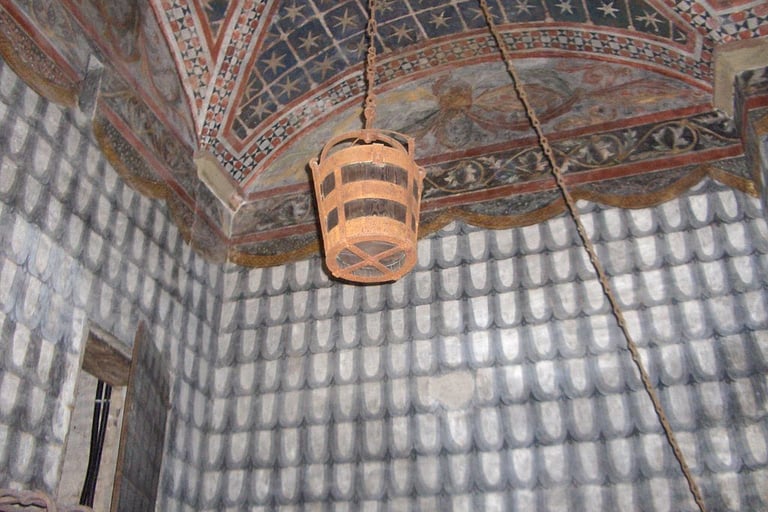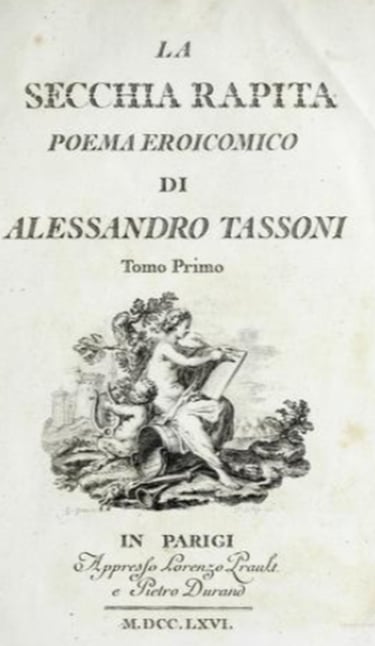I first became aware of the so-called ‘war of the bucket’ when watching an amusing history video suggested to me on YouTube. It started with a compellingly silly story about a particularly deadly war between Bologna and Modena in 1325 fought over the most coveted possession of Bologna, stolen by the Modenese: a wooden bucket.
Deadly battle… 1325… Bologna and Modena… that sounded awfully familiar…
As a student of Bolognese history, I was aware of the battle of Zappolino as it had extremely dire consequences to the Bolognese economy and its strained political system. The Bolognese defeat at Zappolino brought them to invite a French cardinal named Bertrando del Poggetto two years later to govern the city and stabilise their precarious situation. After finding that he was less than respectful of their communal traditions, it still took them about seven years to get rid of him. But what’s with the bucket?


Bertrando del Poggetto.
Legend vs history
The bucket was supposedly stolen from the well in the citadel of San Felice – on the western side of Bologna’s walls – by two men from Modena, which triggered a Bolognese attempt to retrieve it, thus starting the war. This story is repeated in entries on Wikipedia and history blogs on the internet (never trust those…). And the situation is not helped by the fact that there is an old wooden bucket kept in Modena and believed to be the unfortunate hero of this story.


Tassoni wrote this epic poem in twelve cantos about the war between his native city of Modena and Bologna in which he retold this story in a humoristic manner but in epic form. He called this novel style ‘poema eroicomico’, or heroic-comic poem. He also added an introduction to the poem under his pseudonym Bisquadro (a word meaning irregular, bizarre), which he used as a member of the Academy of the Humourists in Rome (founded in 1600). In the introduction he made quite an erudite case for mixing serious and humoristic themes and pointed out that some of his characters are idealised figures rather than real people. This wonderful and witty poem makes for a thoroughly enjoyable read, but nothing about it particularly screams ‘accurate historical account’. So why did it become the received narrative of this battle in the popular imagination?
The answer to this question may be quite simple: a fun and quirky story about a bucket is easier to remember and digest than the almost comically complicated conflict between Guelfs and Ghibellines in medieval Italy. Just like the so-called Football War between Honduras and El Salvador in 1969 which had very little to do with football but is remembered by that name because it coincided with the World Cup.
The fact that a widely read literary work found a more compelling way of retelling history and became the public’s main reference point (even if some of the key details were altered) is not unusual either. Shakespeare, for example, shaped popular understandings and memory of the War of the Roses in a way that only sometimes corresponds to historical fact (if you’re not sure, just ask the Richard III Society).
But should we care?
Is there really any harm in people remembering an approximated but slightly incorrect version of history? As a trained historian my gut instinct is that of course it matters. History as a discipline is built on the basis of details and facts and careful reconstruction of narratives, so how could we possibly endorse an untrue story? But since in the last decades we have moved away from the nineteenth-century ideas of objectivity and of telling history ‘how it actually happened’ (to quote Leopold Von Ranke), to acknowledging different points of view and biases in our sources, maybe we can also be a bit more relaxed about that kind of popular narratives. After all, they also teach us something about how people remember the past.
The ‘war of the bucket’ narrative, unreliable as it is, is still important on the merit that it is an enduring way in which people remember the past. But if it were up to me, the ‘war of the bucket’ would be confined to the rather obscure world of historiographical fun-facts instead of being the popular understanding of the battle of Zappolino. Not necessarily because it is factually flawed, but because the complicated truth is far more instructive. By dealing with the complex details and intrigues of the past, and trying to understand and relate to them, we can develop empathy towards people who we sometimes perceive as ‘other’. Yes, silly wars about buckets are more entertaining, but understanding cultures from the past and thinking about how they relate to our own is, I would argue, a much more worthwhile endeavour.
Sources:
Alessandro Tassoni, La secchia rapita (Florence, 1912).
Giuliano Milani, ‘From One Conflict to Another (13th-14th Centuries)’, in Sarah Blanshei, ed., A Companion to Medieval and Renaissance Bologna (Leiden, 2018).
Matteo Griffoni, Memoriale Historicum De Rebus Bononiensium (Città di Castello, 1902), pp. 36-37.
Vito Vitale, Il dominio della parte guelfa in Bologna (1280-1327) (Bologna, 1901).


